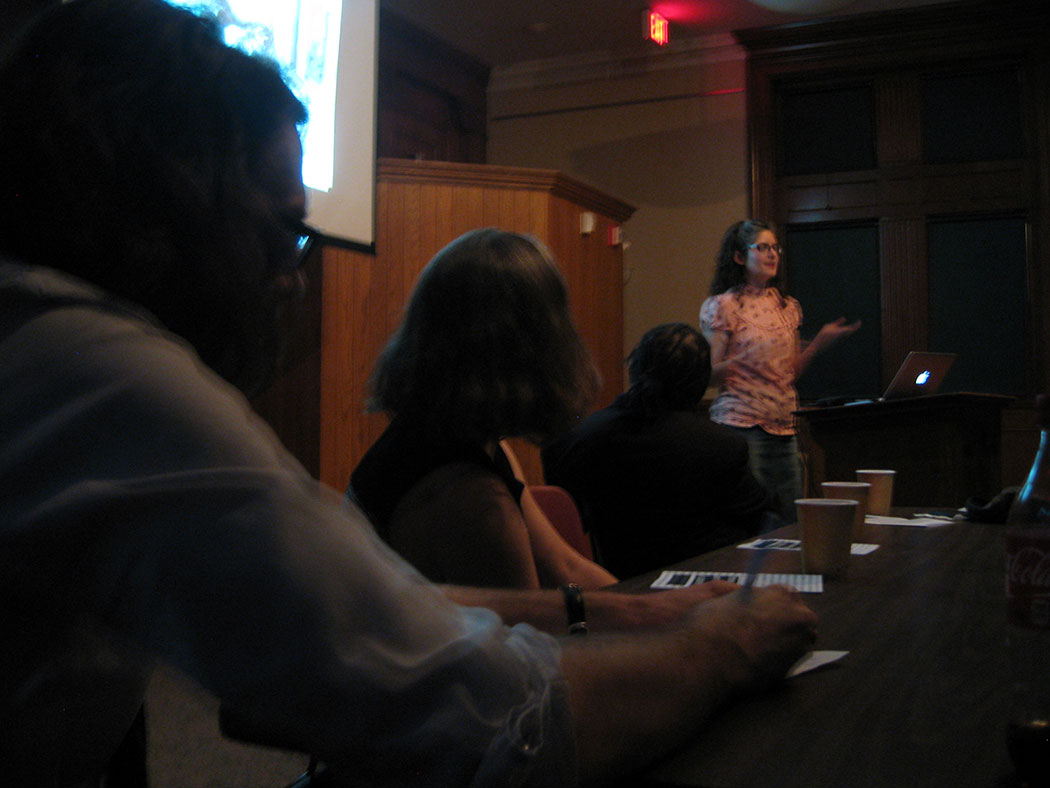“I had a perfect plan,” said one mom in the audience of the “How To Be An Artist And Parent” talk that Somerville artist and dad Tim Devin and I hosted at the Malden Public Library in Massachusetts on May 12. She was a painter. She had freelance design clients. She could work from home after she had her children. “It worked really well,” she said, “until the kids started to walk and to talk.”
Being an artist is challenging—it’s difficult to make money as well as make art. Adding a child to your life is both wonderful … and compounds the time squeeze we all face. Parenting can not only reduce the time we have to make art—but also the time to think about making art, time we need to develop ideas. The demands of raising children can feel isolating—taking up time we would have previously spent with friends. And becoming a parent often coincides with moving to new communities to raise our kids—moving away from our friends and support networks.
At the library talk, artist-parents Paige Wallis of Malden (at top, pictured speaking at the event), Stacy Thomas-Vickory of Beverly and James Montford of Boston spoke about how they try to make it work. Then we had a conversation with all who came sharing our questions and experiences. Join us when we do another artist-parent community discussion at the Somerville Public Library on May 30.
“It’s all about time management,” Montford said.
“With kids you don’t have long spans of time anymore,” Lisa Sears, a Malden mom in the audience, said. “There was nothing there because I hadn’t had that time to do the thinking. … I feel like I’m constantly interrupted.”
Below are some ways of being an artist-parent that we talked about at the Malden library. They’re not meant to be definitive—and some are contradictory—but consider them possible models.

• Meet up with other artist-parents and their kids. Montford talked about causal get togethers with another artist-parent—the kids could play together while the adults talked art (or not about art). Similarly, Thomas-Vickory was part of a group of artist-parents who met each Friday night for dinner with their families. It gave them time to talk about art (or not)—even while all pitching in to prepare the food. The gatherings could at times also serve as childcare for parents who stayed home. And, Thomas-Vickory said, it provided a community for both the parents and kids.
• “It was always about food,” Montford said. To free up time from preparing food for the family each day—and use some of it instead for art-making—on Sundays he made meals for the entire week and then froze them for eating later.
• How can we continue to nurture our creativity even when we don’t have long blocks of time to make our art? “For many years, I did not make my art,” Montford acknowledged. Wallis said she selects shorter projects or puts her creativity into other things like making top hats for Edwardian balls or going all out when designing her kids’ parties.
• Make art assignments for yourself—like from college. Sears said she did this as a way keep her mind on art, to keep active.
• Join an art group. Wallis joined the weekly Malden Sketch Group, and applied for shows to help herself find time to make art.
• Instead of making art with the inspiration and feelings of the moment, consider shifting to longer projects. With shorter blocks of time to make art, Thomas-Vickory started working on large drawings that would take weeks or months to finish. A challenge, she said, is “it’s really hard to maintain the same mood for six weeks.” She relies on routine. When she returns to a project after a break, she puts on the same music, drinks the same flavor of tea, works at the same time of day. She found her new style of working “meditative. … It’s my time to reflect on what’s happening.”
• Find a dedicated space for art making. Wallis notes that in her home she now has a studio “with a door that can shut.”
• Go to museums and galleries to continue thinking about art.
• How can our life/job situations support being an artist and parent? Montford found work teaching at boarding schools because they offered a way to care for his kids and give them a safe campus environment where they were free to roam.
• It can be helpful to find your own personal role models of people who’ve done this artist-parent thing.
The next “How to Be an Artist and a Parent” talk features Jef Czekaj, Jennifer Johnson and Trudi Cohen at the Somerville Public Library, 79 Highland Ave., in Massachusetts at 2 p.m. Saturday, May 30, 2015. It’s free and open to the public.
Greg Cook is a Malden dad, a doodler, a shutterbug, an organizer of “The Saddest Parade on Earth,” and an art journalist for WBUR.
